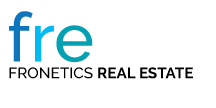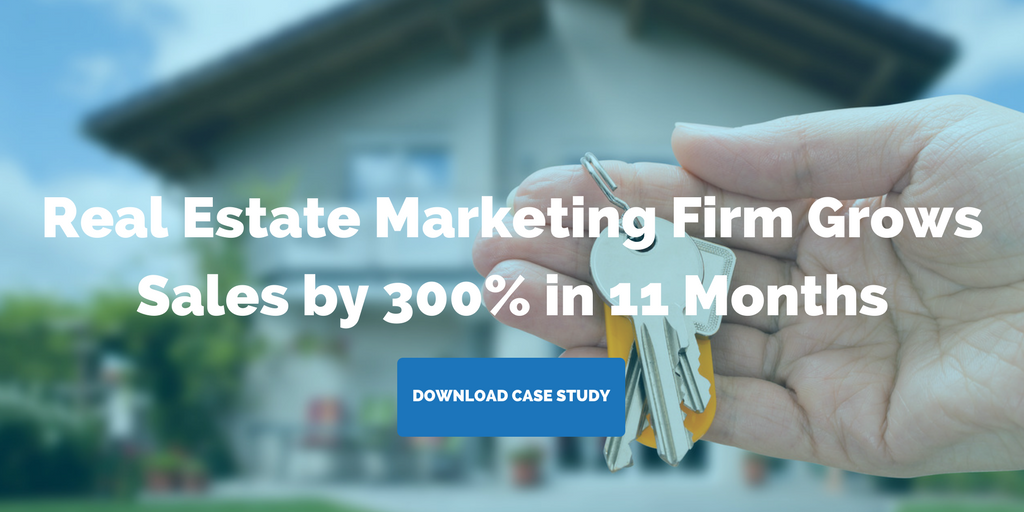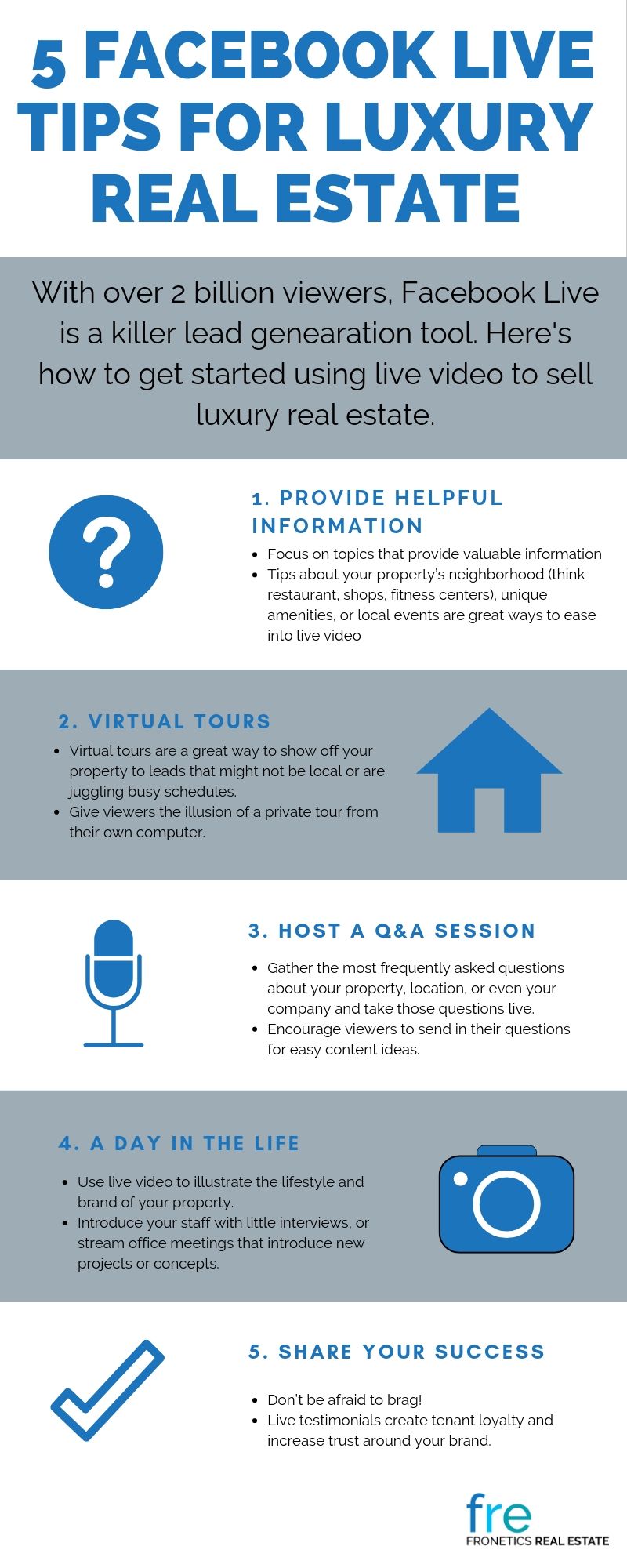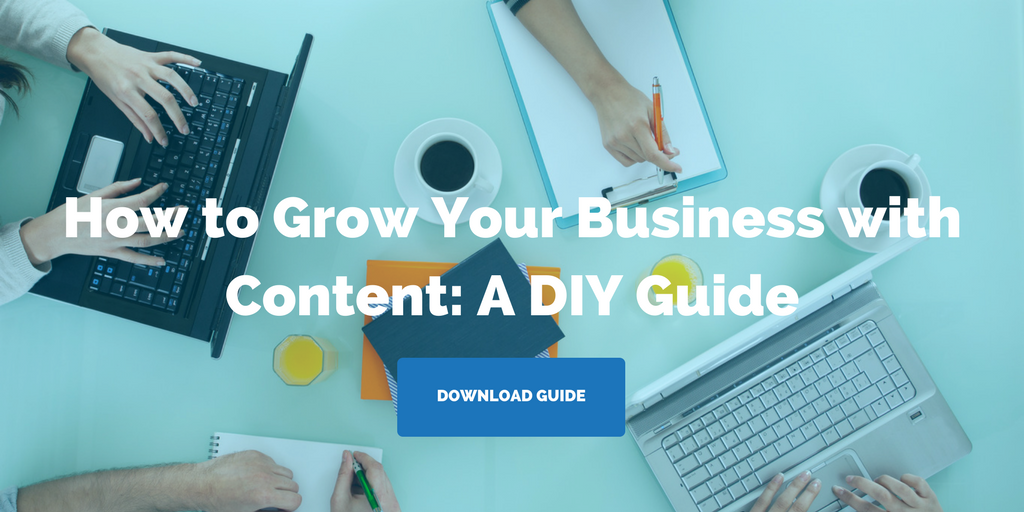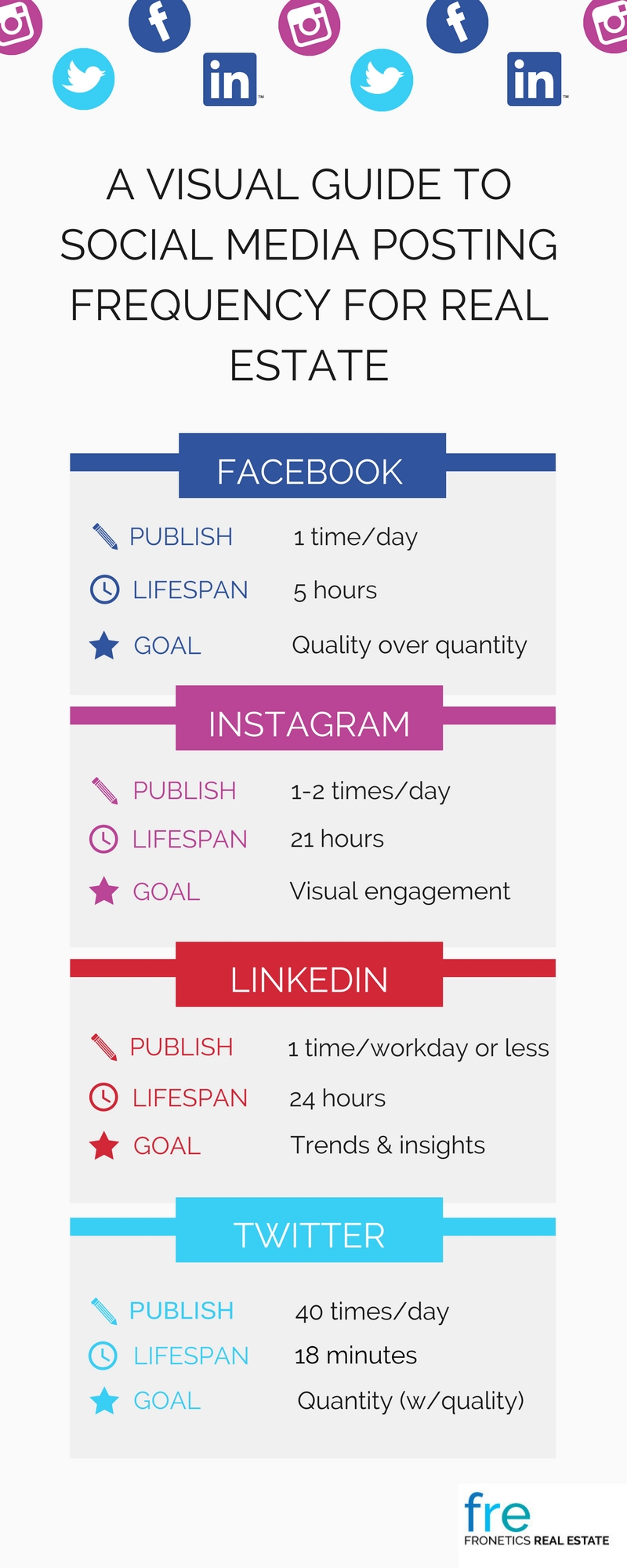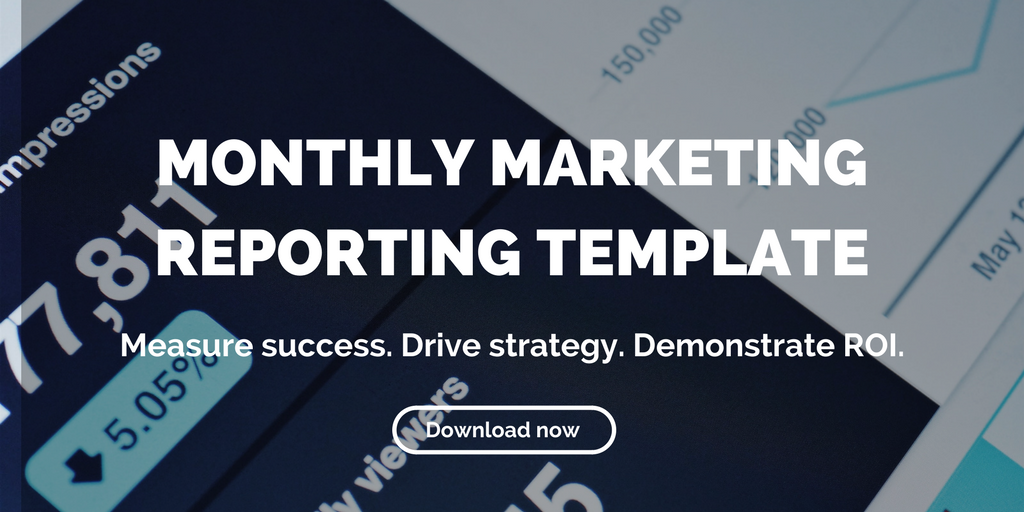Your search results for "Reliable CPC-CDE-RECERT Braindumps Sheet 🍳 Best CPC-CDE-RECERT Practice 🔚 Test CPC-CDE-RECERT Sample Questions 💉 Easily obtain free download of ▶ CPC-CDE-RECERT ◀ by searching on ☀ www.pdfvce.com ️☀️ ✊Exam CPC-CDE-RECERT Study Solutions"

This is How Often Real Estate Companies Should Post on Social Media
Remember these best practices when deciding how often your company or property is going to post on each of these social media platforms.
Creating engaging, relevant content in a strategic and consistent manner raises brand awareness for your property and drives sales. But as BuzzFeed’s Jonathan Perelman said, “Content is king, but distribution is queen and she wears the pants.”
It’s not enough to just create interesting and pertinent content; you have to put it out there to reach your target buyer or tenant. Moreover, the content needs to be delivered consistently over time, at the right time, and in the right place.
With social media networks changing daily, it’s hard to keep up with where to distribute content, much less how often. Countless studies have attempted to solve the social-media-frequency equation. And while audiences vary across price points and regions, best practices give us some general guidelines.
Here’s our assessment of social media posting frequency.
How often to post on social media
Twitter: 40 per day*
*Big caveat here: 40 tweets per day is what we’ve found works for us and most of our clients. Let me explain.
Socialbakers suggests that posting to Twitter three times per day is the ideal frequency for brands. Buffer posts to Twitter 14 times per day. Fronetics, our supply chain brand, happens to tweet 40 times per day. So recently, after seeing the Socialbakers and Buffer stats, we conducted a month-long experiment to see how dropping our posting frequency closer to their benchmarks would affect our engagement.
As we’ve written about before, it wasn’t pretty. We confirmed that our engagement, web traffic, lead generation, and other key performance indicators are at optimal levels when we tweet 40 times per day.
Your company, or your marketing partner, should conduct due diligence and determine what the right frequency is for your business. For Fronetics Real Estate, we’re currently tweeting 6-10 times a day, working up to more as we are able. The strategic growth of your social media program is also an important element to consider when determining a posting frequency that’s best for your company or property.
Facebook: 1 per day
Most companies find that posting 1 time per day is their sweet spot for most social media networks. Facebook is no exception: The network’s algorithm values quality over quantity, so the more engaged your followers are with your content, the more likely they are to see your posts. This also means that posting content that does not facilitate engagement can actually decrease the likelihood that followers will see your posts.
One sure way to encourage disengagement is by overwhelming your audience. We all have that friend or company we follow that posts too much — don’t be like that person.
Remember that the lifespan of a Facebook post (about 5 hours) is significantly longer than that of a tweet. So you don’t need to provide a constant stream of content to get your audience’s attention. Your focus should be distributing the most relevant, interesting content you can, at a time when most of your audience will be on Facebook.
Instagram: 1-2 per day
There’s an unwritten rule among Instagramers that a user shouldn’t post more than once per day. We generally agree for the same reason we don’t think brands should post more than once a day to Facebook: Don’t overwhelm your audience because the lifespan of your posts is pretty long. In fact, a Union Metrics study found that many Instagram posts continue to receive engagement for days — even weeks — after posting.
Most brands end up posting 11-20 posts per month. If you focus on compelling images with strategic messages, that’s probably a good benchmark to stick with. It’s important to note, however, that another Union Metrics study suggests posting consistency is more important than frequency. Again, taking the time to test the Instagram posting frequency that works best for your business is a worthwhile endeavor.
LinkedIn: 1 per workday or less
A more formal and technical social media network, LinkedIn is a platform for business-related content. But users also seek information about potential investments and market information — and that is where your opportunity lies.
Consider posting on LinkedIn only during the workweek, or even less. To provide the most value for your LinkedIn followers, content should be less promotional and more heavily focused on market trends and insights. Followers will come to consider your company or property as a go-to resource about the real estate market, local amenities and attractions, and investment opportunities.
At the end of the day, optimal posting frequency for your company or property rests heavily on the audience you want to reach. Experimenting with different social media networks and posting frequencies will give you greater insight into your ideal distribution approach. With these best practices as a guide, let your own analysis be your guide. Maintaining a dynamic and fluid posting strategy will ensure that your social efforts drive followers to action, rather than drive them away.
Related posts:
-
When Traditional Real Estate Marketing Methods Stop Working, Try Digital Marketing
-
6 Signs It’s Time to Consider Outsourcing Your Real Estate Marketing
-
5 Tips for Building a Successful Real Estate Social Media Marketing Program
Your search results for "Reliable CPC-CDE-RECERT Braindumps Sheet 🍳 Best CPC-CDE-RECERT Practice 🔚 Test CPC-CDE-RECERT Sample Questions 💉 Easily obtain free download of ▶ CPC-CDE-RECERT ◀ by searching on ☀ www.pdfvce.com ️☀️ ✊Exam CPC-CDE-RECERT Study Solutions"

Infographic: 5 Tips for Using Facebook Live for Real Estate Brands
Live video marketing is one of the best and most cost-effective ways to grow brand awareness and generate leads. Here are five tips for using Facebook Live as part of your video marketing strategy.
Highlights:
- Facebook Live’s average daily views doubled year-over-year with over 2 billion users.
- Virtual tours on Facebook Live are a great way to show off your property to leads that might not be local or are juggling busy schedules.
- A live testimonial provides an opportunity for clients to talk about your property, creating customer loyalty and increased brand trust.
As a real estate marketer, you’re well aware of the popularity of video this year. Video is everywhere and the trend isn’t slowing down. Fifty-four percent of consumers actually want to see more video content from brands.
So while more real estate brands are increasing use of video in their digital marketing strategy, some are still hesitant to use live video options, like Facebook Live. I get it, going live is scary. With other video options, you can easily delete and start over. Live video gives you one shot to get it right. And not everyone will join your video when you start, so it’s key to iterate your main points several times without sounding redundant.
But don’t let your nerves stand in the way of trying Facebook Live. Initially launched in 2015, the live video streaming platform has soared in popularity by giving viewers an up-close and personal look at real estate brands. In just two years, Facebook Live’s average daily views doubled year-over-year with over 2 billion users and those who watch videos will spend three times as much time on a Live video than a produced one.
It’s easy to see with numbers like that how Facebook Live can help grow brand awareness and start generating leads. Here are 5 tips to get you using Facebook Live for your real estate brand.
Infographic: 5 tips for using Facebook Live for real estate brands
-
Provide helpful information
We talk a lot about the importance of high quality, valuable content and the same holds true for live video. Try to focus on topics that will provide valuable information for your viewers. Tips about your property’s neighborhood (think restaurant, shops, fitness centers), unique amenities, and local events let you ease into live video by covering topics that you’re comfortable with and knowledgeable about. And viewers will find them useful, too.
-
Virtual tours
They say a picture speaks a thousand words, so imagine what live video can do! Don’t just talk about the key features of your property — show your viewers. Virtual tours on Facebook Live are a great way to show off your property to leads that might not be local or are juggling busy schedules. Seeing your property in real time will give viewers the illusion of a private tour from their own computer.
-
Host a Q&A
Hosting a question and answer session is one of the easiest ways to get your feet wet with live video. Think about the most frequently asked questions about your property, your location, even your real estate brand and take those questions to Facebook Live. Don’t be afraid to start a Q&A–series where you address questions on a regular basis. Encourage viewers to send in their questions for easy content ideas.
-
Day in the life
Use live video to show the human side of your real estate brand. Introduce your staff with little interviews and stream office meetings that introduce new projects or concepts. This inside look shows who you are and what your brand stands for, which helps build trust in your company and your properties.
-
Tell your success stories
People love a good success story and if a recent buyer (or leasee) is willing to go on camera to rave about your property, you should jump at the opportunity. As a marketer, you know that customer testimonials serve to increase trust, so why not showcase your satisfied clients? A live testimonial provides an opportunity for clients to talk about your property, creating customer loyalty, and increased brand trust.
Final thoughts
Live video is an ideal way to establish your credentials and generate leads. With Facebook Live, real estate brands ca boost brand awareness, build trust, and increase engagement. Use these tips to make live video work for you. Need help getting started? You know where to find us.
Related posts:
- 3 Ways to Boost Your Real Estate Marketing with Video
- Infographic: Best Video Distribution Channels for Real Estate Marketing
- 6 Simple Tools for Creating Animated Real Estate Marketing Videos
Your search results for "Reliable CPC-CDE-RECERT Braindumps Sheet 🍳 Best CPC-CDE-RECERT Practice 🔚 Test CPC-CDE-RECERT Sample Questions 💉 Easily obtain free download of ▶ CPC-CDE-RECERT ◀ by searching on ☀ www.pdfvce.com ️☀️ ✊Exam CPC-CDE-RECERT Study Solutions"
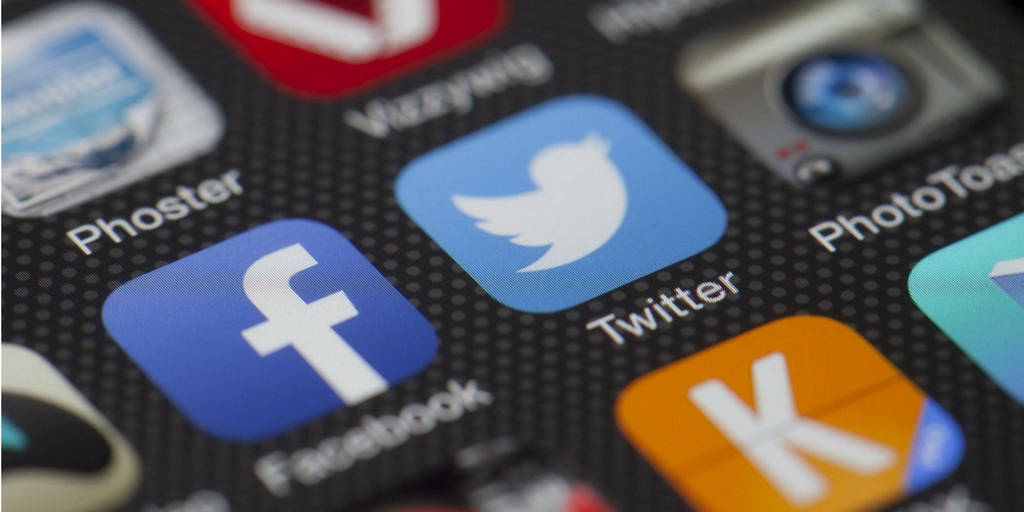
A Visual Guide to Social Media Posting Frequency for Real Estate
Our infographic breaks down the ideal social media posting frequency for properties and real estate companies on Facebook, Twitter, Instagram, and LinkedIn.
“Content is king, but distribution is queen and she wears the pants.”
These are wise words from BuzzFeed’s Jonathan Perelman, indicating that creating interesting and pertinent content is just half the battle. To reach your target buyer or tenant, raise brand awareness for your property, and drive sales, your content needs to be delivered consistently over time, at the right time, and on the right platform.
But keeping pace with where to distribute content, let alone how often, is no easy task. With social media networks changing daily, and countless studies trying to solve the social-media-frequency equation, things can seem hopelessly confusing.
To help you navigate these murky waters, we’ve assembled this infographic, based on our assessment of best practices. Of course, audiences vary widely across price points and regions, but we hope this resource will give you some general guidelines.
Social media posting frequency for real estate: An infographic
A few points to consider
Here’s a little more information on why we came to these conclusions for social media posting frequency for each platform.
After looking at various statistics from other brands, which suggested an ideal frequency far lower than our own, we conducted an experiment, using our supply chain brand, Fronetics. After dropping our post frequency for a month, we confirmed that our engagement, web traffic, lead generation, and other key performance indicators are at optimal levels when we tweet 40 times per day.
Facebook’s algorithm favors quality over quantity. This means that the more engaged your followers are with your content, the more likely they are to see your posts. So posting content that doesn’t facilitate engagement can actually decrease the likelihood that your audience will see your posts.
It’s also important to remember that the lifespan of a Facebook post is about 5 hours — much longer than that of a tweet. We’ve determined that for optimal Facebook engagement, you don’t need to provide a constant stream of content to get your audience’s attention. Instead, your focus should be distributing the most relevant, interesting content you can, at a time when most of your audience will be on Facebook.
We’re in agreement with most Instagram experts in that we find that, as with Facebook, it’s best not to overwhelm your audience with a constant stream of content.
Additionally, your posts have a long lifespan on Instagram. A Union Metrics study found that many Instagram posts continue to receive engagement for days — even weeks — after posting. We’ve found that focusing on compelling images with strategic messages, posted at a low but consistent frequency, you’ll get the most bang for your buck on Instagram.
LinkedIn is generally acknowledged to be the elder statesman of social networks. A more formal and technical social media network, it’s a platform for serious business-related content. It’s a place where users seek information about potential investments, as well as market information — and that’s a goldmine of opportunity for you.
We’ve found that posting just once per workday, or even less, and posting content that’s less promotional and more heavily focused on market trends and insights is the best practice for LinkedIn. Your goal is for followers to come to consider your company or property as a go-to resource about the real estate market, local amenities and attractions, and investment opportunities.
Conclusion
The numbers you see in our infographic reflect what we’ve found works best for us and our clients in terms of social media posting frequency. Your company, or your marketing partner, should conduct due-diligence and determine what the right social media posting frequency is for your business.
Experimenting with different social media networks and posting frequencies will give you greater insight into your ideal distribution approach. Maintaining a dynamic and fluid posting strategy will ensure that your social efforts drive followers to action, rather than drive them away.
Related posts:
- How to Use Social Media Hashtags in Real Estate Marketing
- Social Media Trends for 2018 Real Estate Marketers Need to Know
- 4 Steps to Building a Successful DIY Content Marketing Strategy for Real Estate
Your search results for "Reliable CPC-CDE-RECERT Braindumps Sheet 🍳 Best CPC-CDE-RECERT Practice 🔚 Test CPC-CDE-RECERT Sample Questions 💉 Easily obtain free download of ▶ CPC-CDE-RECERT ◀ by searching on ☀ www.pdfvce.com ️☀️ ✊Exam CPC-CDE-RECERT Study Solutions"

Marketing Automation for Real Estate Marketers is Key to Lead Generation
Real estate marketing is an increasingly complex undertaking. Luckily, marketing automation for real estate is here to help you streamline your efforts.
Highlights:
- Marketing automation tools automate the process of personalizing leads’ interactions with your properties
- Create email workflows, schedule social media posts, and streamline CRM with automation software
Real estate marketing is a massive undertaking, which only grows in complexity as real estate buyers demand more and more personalized experiences throughout the buyer’s journey. Enter marketing automation, featuring a range of solutions for custom lead-nurturing content to all prospects in your database.
The term “marketing automation” describes a variety of tools used to automate the process of personalizing the interactions that your leads have with your properties. Email workflows, social media scheduling tools, and customer relationship management (CRM) are all examples of automated marketing. You can tailor custom email messages based on indicated interests, streamline social media efforts with scheduled posts, evaluate the success of your efforts, and adjust your strategy accordingly.
HubSpot recently reported that businesses using marketing automation to nurture leads received a whopping 451% increase in qualified leads. The same principles apply to marketing automation for real estate. Used correctly, marketing automation software can deliver real-time, personalized messages to prospective buyers and renters at every step of the lead-generation process.
With so many tools and insights available, it’s easy to get overwhelmed. Here’s our guide to what you need to know about marketing automation for real estate.
Marketing automation for real estate: Email workflows
Having a segmented email list — sorted by when a prospect joins the list, what emails they’ve opened, their demographics, etc. — is key to creating effective email workflows. With a quality list, you can ensure you’re sending the most relevant information to your prospects, keeping them invested (and keeping you out of their spam folder).
The first step is setting up a template; once you do that, you can plug in your content, manage your contact list, and schedule your emails in advance.
Our favorite tools for email workflows
1. Customer.io
This tool lets you send targeted messages to your prospects, crafting them based on how they interact with your property, and making personalized messages simple. You can also keep track of conversions and create customer profiles. Our favorite part? It integrates with your mobile app or website, letting you see data in real time and trigger actions by adding in predefined rules.
2. Constant Contact
This powerful tool has some features that are unique — and can take your marketing capabilities beyond the basics. Beyond setting up and managing an automated database, Constant Contact offers Facebook fan promotion, coupons and deals, and event management.
Social media scheduling
Keeping your posts on multiple platforms up to date, consistent, and engaging can be a major time drain. Automating your social media marketing efforts lets you plan ahead and schedule updates on some or all of your social media channels, and lets you easily strategize about peak posting times.
Our favorite tools for social media scheduling: AdRoll
AdRoll is an extremely effective tool for retargeting prospects through re-engagement on Facebook, Twitter, and elsewhere on the web. It offers cross-device and cross-platform retargeting capabilities, as well as flexible segmentation, letting you provide customized experiences that dramatically improve your marketing efficiency. It also offers customized budgeting and full control over ad spend.
Customer Relationship Management (CRM)
Converting website visitors to leads is always the goal, but it often comes with a back-breaking load of time-consuming labor. The right software lets you move your prospect through the sales funnel automatically, sending emails to educate them on the next steps, and scheduling them for viewings.
Our favorite tools for CRM
1. Pardot
Pardot is an all-inclusive marketing automation suite, but it’s particularly strong for amping up your engagement with CRM integration. It’s a great tool for helping your sales team shorten the sales cycle. And, in addition to CRM integration, it offers email marketing, lead nurturing, lead scoring, and ROI reporting.
2. Marketo
This cloud-based marketing software lets you drive revenue with lead management and mobile marketing. It not only helps build prospect relationships, but it helps you sustain them as well. Best of all, you can try it out for free until you’re sure it’s right for your company.
Select one or more of these tools, study them carefully, and get to work. Eventually, marketing automation for real estate will become second nature, save you time, and, most importantly, generate solid leads.
Related Posts:
- Our 6 Favorite Marketing Automation Tools for Real Estate Marketers
- 5 Marketing Automation Ideas for Real Estate
- Social Media Can Be a Strategic Weapon in Real Estate Marketing
Your search results for "Reliable CPC-CDE-RECERT Braindumps Sheet 🍳 Best CPC-CDE-RECERT Practice 🔚 Test CPC-CDE-RECERT Sample Questions 💉 Easily obtain free download of ▶ CPC-CDE-RECERT ◀ by searching on ☀ www.pdfvce.com ️☀️ ✊Exam CPC-CDE-RECERT Study Solutions"

How to Measure Brand Awareness: A Guide for Real Estate Marketers
If you want to measure brand awareness for your property, use these 4 metrics, which indicate if prospective buyers or renters know about it.
When it comes to selling property — particularly luxury properties — growing brand awareness is an important goal. Prospective buyers need to know that your property exists and that it can provide the kind of lifestyle they’re looking for.
Measuring how well you’re doing at getting the word out about your brand and property/properties is critical to optimizing your marketing strategy. But measuring brand awareness can be tricky.
To help you quantify the results of your efforts, here are 4 metrics that indicate that you’re building brand awareness.
4 metrics to measure brand awareness
1) Social media reach
The reach of your social content has a direct impact on your brand awareness. As your social media reach grows, so does your potential brand audience.
SharedCount is a free online tool that allows you to track the number of times a piece of content has been shared on social media, including Facebook, LinkedIn and Google. It’s an easy way to get basic information about your social reach, so you can spend less time tracking tweets and more time producing your content.
2) Brand mentions
There’s a great deal of value to be gained from monitoring discussions about your brand and properties online. Tracking brand mentions can lead to honest feedback and objective insight from potential buyers.
There are several options you can use to track brand mentions. We prefer the convenience of Google Alerts, which allows you to easily set up a custom alert.
Or Hootsuite can track brand mentions, as well as specific keywords and phrases, (like individual properties or neighborhoods) across all of your social media feeds.
3) Blog shares
By adding a share bar to your blog posts, you make it easy for readers to share your blog content on social networks, spreading awareness about your content and your properties through the amplifying effect of social media.
These share bars are easy to set up and even easier to monitor. By measuring your average number of shares per blog, you can track what content your users are drawn to and what pieces fall flat.
4) Search volume
One of the main sources of traffic for most websites is through simple searches. If people are searching for your company or properties, that’s a pretty solid indication that they are aware of your brand.
Using online tools, such as Google AdWords or Moz, you can track the searches for your listings, blogs, social media platforms, and any other variation that you find useful. These tools are free, easy to use, and perfect for determining if your brand is popping up when potential buyers are searching.
How do you measure brand awareness?
Related posts:
